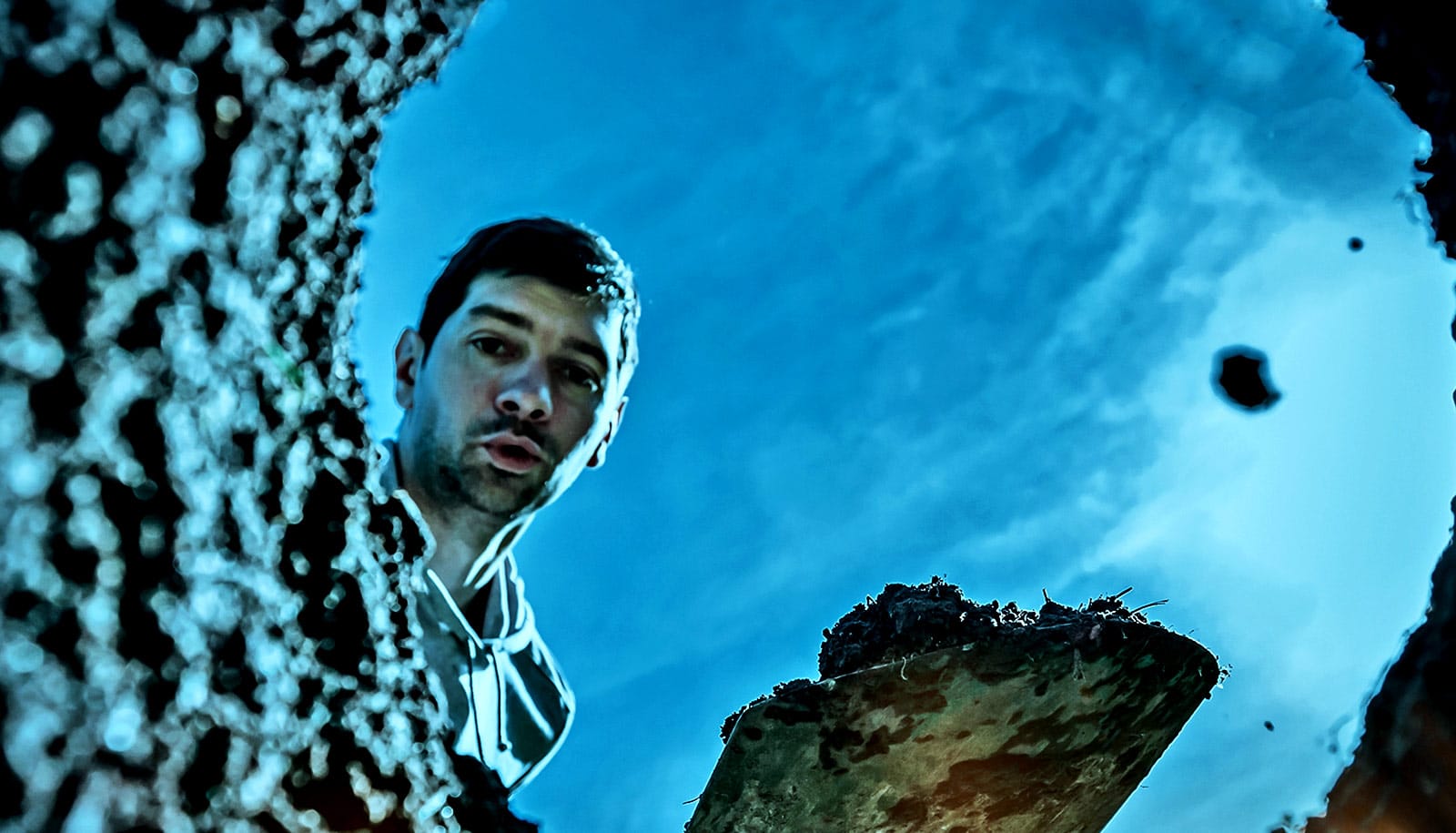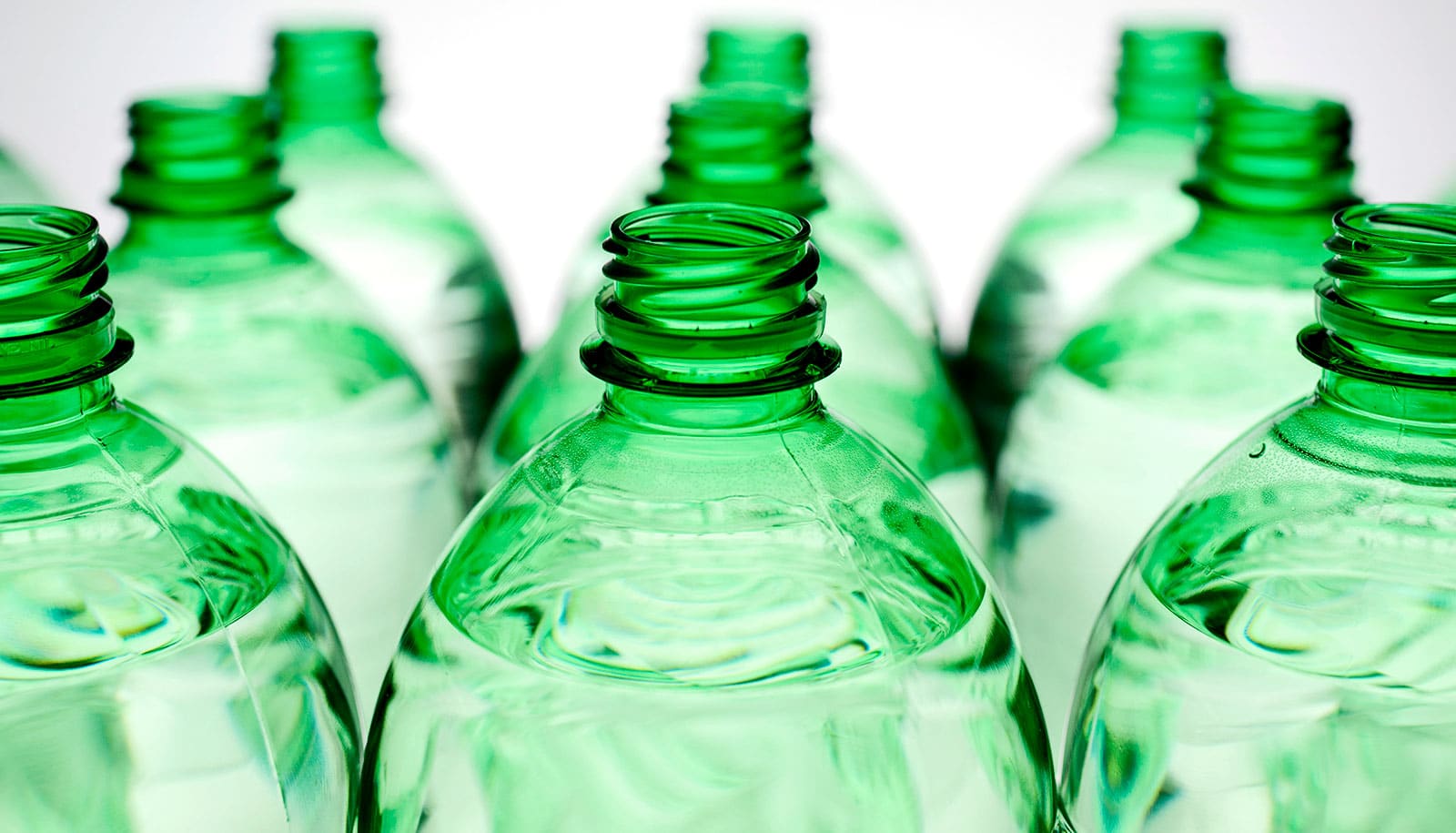New research examines the chemical processes involved in converting carbon dioxide gas into a solid that could be buried beneath Earth’s surface.
In addition to recommending a drastic curtailment and, ultimately, the end of fossil fuel consumption for energy, transportation, and industry, some scientists and engineers have advocated vacuuming carbon dioxide out of the air and storing it underground to combat climate change.
Once the carbon dioxide is buried, it would remain underground indefinitely instead of leaking back out into the atmosphere.
In their new paper in Nature Reviews Chemistry, researchers describe the transformation that takes place when CO2 meets ultrathin films of water on underground rocks containing various types of metals.
“Certain types of rocks, such as those containing basalt, are rich in divalent metal cations that naturally convert CO2 into stable metal carbonate matter,” says co-lead author M.J. Abdolhosseini Qomi, associate professor of civil and environmental engineering at the University of California, Irvine. “Understanding how this process works at the molecular level will help us utilize this beneficial chemistry to help solve the problem of runaway climate change.”
The researchers suggest that there may be regions—on continental land and in the oceans—with the right quantities and ratios of metallic elements and water to facilitate a natural process of carbon solidification, resulting in the safe sequestration of enormous amounts of the greenhouse gas.
“Theoretically, the CO2 storage capacity in continental flood basalts, oceanic igneous plateaus, and basalt ridges exceeds 105 gigatons, which is significantly more carbon dioxide than is emitted from all fossil fuel resources on Earth, according to previous studies,” Qomi says.
He adds that in addition to these natural mineral carbon sinks, the future may bring new techniques to facilitate the conversion above ground using either natural rock or synthetic analogues. “We can tuck this carbonate away or consider ways of using it as raw materials with a variety of industrial and structural engineering applications,” he says.
“In a laboratory, we can tune the ratio of water to CO2 and observe carbonates forming in real time. During the process, we can see which chemicals and compounds are present at different stages; this renders essential information about reaction pathways,” says Russ Detwiler, an associate professor of civil and environmental engineering.
In the paper, the researchers propose augmenting lab experiments with modeling. Given the difficulty in viewing interactions among individual molecules, computational chemistry models can fill a gap by offering detailed predictions of process outcomes.
“There are important synergies between models and laboratory or field studies,” says Qomi. “Experimental data grounds models in reality, while models provide a deeper level of insight into experiments.”
“Mitigating human emissions requires fundamentally understanding how to store carbon,” says co-lead author Quin Miller, a Pacific Northwest National Laboratory chemist. “There is a pressing need to integrate simulations, theory, and experiments to explore mineral carbonation problems.”
The study also involved researchers at the University of Wyoming. Support for the work came from the US Department of Energy Office of Science.
Source: UC Irvine



